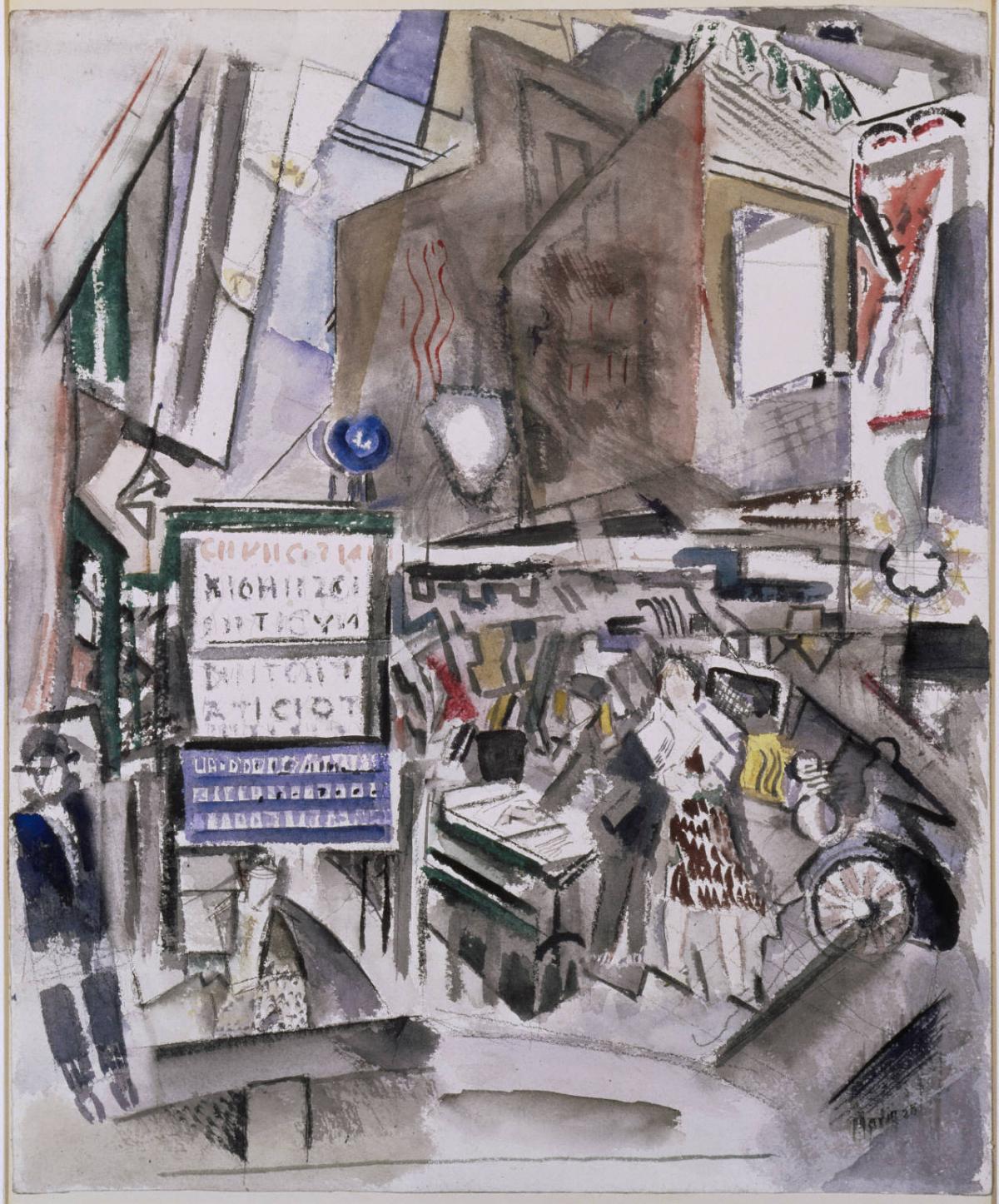Street Crossing, New York
John Marin ( 1928 )

Marin first depicted New York in 1909–10, and it became one of his favorite themes. His images of the city personify the hurly-burly pace of urban life in twentieth-century America, as in Street Crossing, New York, in which fragmented, interspersed planes represent towering buildings and sketchy lines suggest objects and moving figures.
The idea that music and painting were related was becoming a popular theme during the 1920s. Jazz was emerging as the popular form of music, with its syncopated rhythms and bursts of energetic sound. To Marin, jazz symbolized New York’s pulsating energy and became a metaphor for modern American culture. The confluence of music and painting happed at Alfred Stieglitz’s Gallery 291. Marin was most likely influenced by Henri Bergson, another associate of Stieglitz’s who wrote on this subject in “What Is the Object,” published in the 1913 issue of Camera Work. Marin wrote, “While these powers are at work, pushing, pulling, sideways, downwards, upwards, I can hear the sound of their strife and there is great music being played.”
In Street Crossing, New York, Marin has tried to convey the undefined rhythmic patterns of jazz with the jagged towering buildings and strong diagonal lines throughout the composition, which increase the feeling of movement and exhilaration. Around the subway station in the lower left, fine lines and thick slashes of paint allude to speeding cars and rapidly walking pedestrians, creating a seemingly agitated but well organized image of urban activity, echoing the randomness of a jazz movement. Duncan Phillips wrote in 1926 that Marin was “a modernist in his emotional tempo” and felt that he gave us “the quickened sense of our intense modern life in the midst of encircling and bewildering elements.”